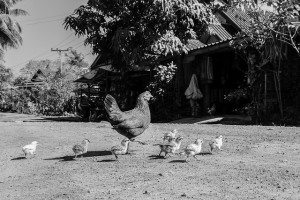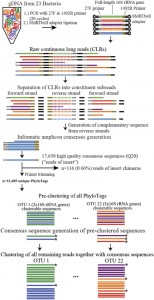This recent news article discusses a new candidate antimicrobial called Globomycin and the work that researchers at Trinity College Dublin have put in to map out its spatial organization. A particularly interesting point that is discussed is the idea of narrow-spectrum antibiotics. Antibiotic/antimicrobial resistance is driven in part by the fact that these drugs target a …
Here is another nice paper about microbes degrading human buildings. I guess I am just fascinated by that topic! No matter what we build, microbes will find a way in or on, and will start chewing on things. This paper by a group of Austrian researchers came out a couple of days ago in PLOS …
mSphere, ASM’s new open access journal, published a paper recently called Antibiotic Resistance in Animal and Environmental Samples Associated with Small-Scale Poultry Farming in Northwestern Ecuador, written by Braykov et al. The abstract is as follows: The effects of animal agriculture on the spread of antibiotic resistance (AR) are cross-cutting and thus require a multidisciplinary perspective. …
The title of this commentary in Microbiome, “Making microbiology of the built environment relevant to design” gets right to the heart of one of the long-standing issues in the field. Thanks in no small part to the Sloan Foundation program in the Microbiology of the Built Environment, as well as technological changes in DNA sequencing… …
Set in stone Commentary: Making microbiology of the built environment relevant to design – G. Z. Brown, Jeff Kline, Gwynne Mhuireach, Dale Northcutt and Jason Stenson – Microbiome (OA) Architects are enthusiastic about “bioinformed design” as occupant well-being is a primary measure of architectural success. However, architects are also under mounting pressure to create more sustainable …
Got notified of this paper by some automated Google Scholar searchers I have set up (this one for papers on microbial forensics) and I thought it would be of interest to some.: Source: Journal of Exposure Science and Environmental Epidemiology – Considerations for estimating microbial environmental data concentrations collected from a field setting By Erin E …
An interesting new paper titled The Black Yeast Exophiala dermatitidis and Other Selected Opportunistic Human Fungal Pathogens Spread from Dishwashers to Kitchens came out several days ago in PLoS one. ZupanÄiÄ et al investigated the fungal diversity and distribution of 30 dishwashers. Swabs were taken from various parts in the dishwasher, sink, and on items that had been washed …
This seems like it could be of interest to microbial community researchers: The ISME Journal – High-resolution phylogenetic microbial community profiling Abstract (with bolding by me) Over the past decade, high-throughput short-read 16S rRNA gene amplicon sequencing has eclipsed clone-dependent long-read Sanger sequencing for microbial community profiling. The transition to new technologies has provided more …
A recent paper Dzieciol et al uses 16S pyrosequencing to characterize the bacterial biofilms on floor drains. Listeria monocytogenes was also tested for using both cuture-independent and -dependent techniques. Here is the abstract: Sanitation protocols are applied on a daily basis in food processing facilities to prevent the risk of cross-contamination with spoilage organisms. Floor drain water …
Happy Valentine’s Day! Here is a new post expressing my love for everything microbial and built. Based on real science and yes, there is chocolate. The great indoors Indoor microbial communities: Influence on asthma severity in atopic and nonatopic children – Karen C. Dannemiller – The Journal of Allergy and Clinical Immunology ($$) We sought …



